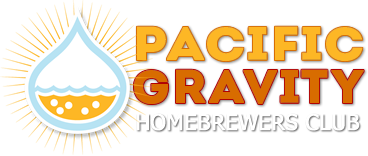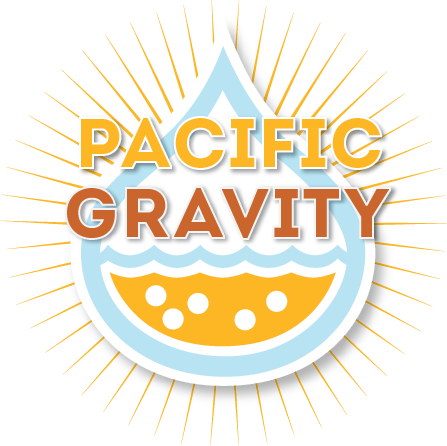How Do I Modify My Smog City Monster Brew?
This Month’s Question: How do I modify my wort from the Monster Brew at Smog City Brewing?
Answer:
I hope you are all planning to join us at Smog City Brewing Company’s First Annual Monster Brew, Saturday, March 8th, 2014, from 7:30 AM to 2 PM hosted by our very own Jon Porter. See the main article about the logistics for the day. We’ll be brewing up a batch of Kölsch-based wort. Where it goes from there is up to you! We’re hoping to have as many variations on the theme as possible for upcoming events such as the Southern California Homebrew Fest, club meetings and summer party.
The recipe for the wort is in the text box. About 2/3rds of the wort is Schill Kölsch Malt. From a maltster co-op based in Osthofen, near Köln, this malt is used by some of the brewpubs in that city to make their trademark ale. Kölsch malt has a light, sweet and extremely German flavor and aroma with a little bit of biscuit character. A bit of Pilsner and wheat malts round out the grain bill. Apart from that, the recipe is light-colored and minimally hopped. This gives YOU the opportunity to spice it up, using your own creativity as broadly as possible. The wort will have a starting gravity of 1.052, with 25 IBUs of bitterness and a color of about 6 SRM. A lot of different beers can be made out of this. With a bit of tweaking, you can make just about anything. Here are some ideas on what to do.
1) Pick a yeast. The wort comes unpitched, so at a minimum, you have to get some yeast for brewing day. As formulated, the wort will make an excellent Kölsch if you pitch with German Ale yeast such as White Labs WLP003, or Wyeast 1007. Use a German lager yeast if you want to make a Pils. Or you can go with an American Ale and make a blonde ale. Whatever style you go for, I suggest making at least a 1 quart starter a few days before the Monster brew.
2) Boost the bitterness or hop flavor. You’ll have to do this if you want to get to IPA range, and I also recommend it for Pale Ale, ESB, Robust Porter, Altbier and several other styles as well. Boil up a small amount of water and add hops to make a hop tea. Boil for at least half an hour with high alpha hops to raise the IBU level, and for best effect, use pellets rather than whole-leaf hops. To calculate the bitterness, use these numbers: Each ½ oz of 12% AAU pellets will boost the bitterness by 15 IBU. Boil for 10 to 15 minutes with your favorite hop variety to boost the flavor. Note that this will boost the IBU level by a smaller amount.
3) Dry hop it. The recipe this year has a low level of Hallertauer finishing hops, but not enough for the citrusy American styles. You can go American for American Pale or Amber Ale, British hops for ESB, or you can go with Continental Noble hops for something like Saison.
4) Make it stronger. Styles such as Maibock or Belgian Tripel can be made by adding some malt extract or Belgian candi sugar. Just boil up a small amount of water and extract and boil for about 10 to 15 minutes, to make sure it is sterile. Cool, and add to your fermenter.
5) Make it weaker. If you are into session beer styles such as Bitter, the gravity will be too high. You can cut the gravity by adding some water. This is a great way of increasing the yield of your brewing day, and you may need a second fermenter to hold the extra volume. For best results, the water should be sterilized by boiling ahead of time for a few minutes. Note that the dilution will drop the bitterness level too, which will fit some, but not all of the lighter styles.
6) Make it darker. Pick a dark grain like roast barley, Special B, chocolate malt or Carafa. Steep in hot water, then strain out the grains and boil the liquid. Voila, instant dark beer! I made a great porter and Schwarzbier the past couple of years with this approach.
7) Make it malty. Discover the magic of melanoidin malt to make some of the malty German lagers styles such as traditional Bock, or Munich Dunkel. I’d even recommend a bit if you are making a Maibock.
8) Do combinations of the above. Suppose you want to make an American Barleywine out of the wort. Boil up some malt extract, add some hops to boost the bitterness and flavor during the boil. Cool and add to the fermenter. Then, dry hop in secondary.
The attached table has a list of some of the interesting combinations you can do. I came up with 20 variations without even breaking a sweat. You can probably come up with even more.
You’ll want to pitch your yeast as soon as you get your wort home. For most of the variations, you should plan on adjusting the wort at the same time, though you could wait a day or so. Make sure you get it going before primary fermentation is done, since the yeast will need to work on the additional materials.
So, start whipping up your recipe now. Hope to see you on the 8th.
Got a question for the Brewmaster? Drop me a line at brewmaster@picobrewery.com. Also, an archive of prior questions can be found at the Picobrewery website at http://www.picobrewery.com.
| Smog City Monster Brew #1 Recipe for 16 Barrels (496 gallons):550 lbs Schill Kölsch Malt 220 lbs German Pilsner Malt 55 lbs Wheat Malt32 Oz Summit 17.8% First Wort/Boil 50 Oz Tettnang 4% at 15 minutes 48 Oz Hallertauer 3.5% at flame-outVital Statistics:OG: 1.052 F.G: 1.013 (though depends on the yeast) Color: 4 SRM IBU: 25 |
| Guidelines for Varying the beer | ||||
| Beer Style | Yeast | Grain/sugar | Hops | Fermentation |
| German Lager | Lager | Cold | ||
| Bohemian Lager | Lager | Cara-Pils | Saaz | Cold |
| American Lager | Lager | Cold | ||
| Vienna Lager | Vienna | Munich or Vienna | Cold | |
| Oktoberfest | Oktoberfest | Melanoidin | Cold | |
| Maibock | Bock | Melanoidin, LME | Cold | |
| Traditional Bock | Bock | Melanoidin, LME | Cold | |
| Doppelbock | Bock | Melanoidin, LME | Cold | |
| Munich Dunkel | Munich Lager | Melanoidin, Munich | Cold | |
| Schwarzbier | Munich Lager | Carafa | Cold | |
| Kölsch | Kölsch | Cool | ||
| Cream Ale | Cream Ale | Cool | ||
| California Common | CA Lager | Crystal | Northern Brewer | Cool |
| Altbier | German Ale | Crystal | Tea/Hallertauer | Cool |
| Blonde Ale | American Ale | Med | ||
| Amiercan Pale Ale | Amer Ale | Tea/Dry Amarillo | Med | |
| American Amber | Amer Ale | Crystal | Tea/Dry Amarillo | Med |
| IPA | AM Ale or Eng | Crystal | Tea/Dry Amarillo | Med |
| Brown Ale | English | Crystal, Chocolate | Med | |
| Porter | English | Chocolate | Med | |
| Dry Strout | Irish | Roast Barley | Med | |
| Export Stout | Irish | Roast Barley, LME | Med | |
| Imperial Stout | Irish | LME, Roast barley | Tea/Goldings | Med |
| Old Ale | English | LME | Tea/Fuggles | Med |
| Barleywine | AM Ale or Eng | LME | Tea/Centenniel | Med |
| Wheat beer | Weihenstephan | Wheat malt | Warm | |
| Wit | Wit | spces: Corriander & Bitter oarange | Warm | |
| Belgian Pale Ale | Antwerp | Bel Biscuit | Warm | |
| Belgian Dubbel | Abbey | Dark Candi, Special B | Warm | |
| Belgian Strong Dark | Trappist | Dark Candi, Special B, CaraMunich | Warm | |
| Tripel | Golden | Light Candi | Warm | |
| Saison | Saison | Dry-Saaz | Warm | |

